The task of designing a new combat system, or any system, for a brand new game can be daunting, especially when staring at the insidious blank page. For me, as a scientist, it is incredibly hard to start from nothing. I am envious of designers that can start from nothing and imagineer fantastic worlds. Out of a simple desire for self preservation I created a few checklists. Their purpose is to help me jump-start the creative process. The first checklist I created is the “five layers of player satisfaction”. In the beginning I used to design new weapons; however, after deeper analysis I found it applied to more than “weapons”. It is a generic structure for what player’s find appealing about any system.
The satisfaction that a player feels when using a mechanic comes from five things: Implementation, Feel, Mastery, Purpose, and Meaningful Choice.
Implementation
No matter how interesting, well thought out, or balanced your mechanic is, if it doesn’t function, then you can’t expect someone to use it. This is not the sole responsibility of programmers; it’s on designers as well. A designer must always take into account the amount of work that his ideas are going to require. You must always make sure that your ideas do not require so much that that you are forced to ship a game with half finished mechanics.
It is easy to blame other people when things go wrong or fall behind schedule. However, designers must take responsibility for failed implementation. Keep in mind the amount of work your systems are going to require from every department, because at the end of the day, we are the top of the shit hill, and all our bad ideas roll down…
Feel
The feel of a mechanic is all about your reaction the first time you use it. The way your bass kicks when you fire that shotgun or the way that guy screams and jitters the first time you shock him with that lightning bolt. How does it look, how does it sound, how do my enemies react to it, how hard is it to use, is it on the right button? The feel of a mechanic is incredibly hard to nail, but it is also incredibly important. If it doesn’t feel good then you won’t stick around to master it.
If you are a particularly analytical designer (like me) it is hard to focus on the Feel of something. The feel of a mechanic is less about the “science” and more about your gut. The best designers I’ve worked with have an almost fanatical passion for this stage of the process. When working on God of War I would watch a designer load up a small arena with just Kratos and a single Hoplite. He would proceed to spend the next several hours beating the crap out of that one enemy in as many ways as possible. Launching the Hoplite into the air and mashing the light attack button he would realize that it felt wrong to only hit the guy twice before you both landed back on the ground, and so would adjust the falling rate of the monster. This was a change not based on any kind of numbers or values or anything that can be quantified other than the fact that it just FELT wrong.
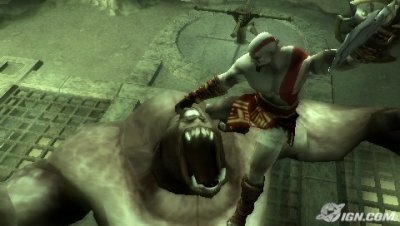
One of the trickiest parts about a God of War enemy is nailing the button minigames. The exact timing of how or when the button shows up and how long it stays active is tricky. It is also a great example of the difference between the “science” and the “feel” of a mechanic. Scientifically, around 15 frames is the number of frames to use if you want a button window that has a decent amount of difficulty. This has been quantified through the countless minigames that have been created. It’s something to start with. There was a particular enemy that a designer was implementing, and he asked me to try the minigame. I played it a few times and said I felt it was just a little too hard. He pointed out that the button was coming up when something cool had just happened to the monster, so my eyes were drawn to the monster. I was distracted and missing the first early frames. To fix this the designer added a frame to the button window and shifted when the button showed up by a few frames – suddenly it felt perfect. Even though the science tells you that it should be a certain way, the feel of the mechanic demands change.
Mastery
Some mechanics are hard to master, like leading your target with a rocket in an FPS, and some are easier to master. Mastery is responsible for that rush of excitement when you use a mechanic effectively, and the harder it is to master the more satisfaction you feel. Challenge is good, but always make sure that a mechanic is not so hard to master that the player gives up in frustration (especially if it’s a core mechanic), additionally you can not make it so easy that it gives no satisfaction. Imagine a sniper rifle that automatically zoomed in on someone’s head. The feeling of satisfaction you get would be fleeting.
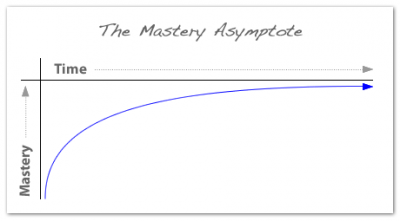
The act of mastering something does not follow a linear curve. In the beginning when you are first learning something it is difficult, but you make progress quickly. Over time it becomes easier to use the mechanic, but your progress (increase in skill) begins to slow down. A great description of mastery comes from the author Daniel Pink in his book “Drive”. He says the following:
Mastery is an asymptote. You can approach it. You can home in on it. You can get really, really close to it. But… you can never touch it. Mastery is impossible to realize fully.
The joy is in the pursuit more than the realization. In the end, mastery attracts precisely because mastery eludes.
You can see this in tons of successful games, but I think one of the best examples is World of Warcraft. In WoW you are constantly mastering new things, and they expose them to the player at such a rate that you are never overwhelmed. In the first few hours of the game you gain several levels in a row, and the Pavlovian design at play (kill -> exp -> level up) is so compelling because you are constantly getting cool rewards. It makes it so that by level 50 you no longer realize it takes days to get that same reward. A lot of people (usually people who have not played it) complain of the Sisyphean nature of WoW (and MMOs in general).
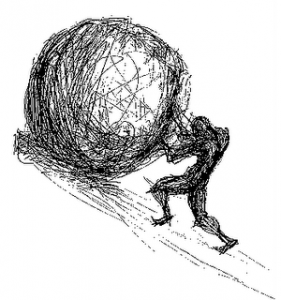
These complaints are… partially correct. In WoW, you do push a rock up a hill, but not forever. In the beginning it’s a very small hill and you eventually do get that rock over. You feel awesome; you’ve mastered some new part of the world. Then the game says to you, “hey buddy, check out this hill over here it is even bigger.” So you roll up your sleeves and get to pushing. Soon enough you push your rock over that hill and the game slyly points out a new hill that is even BIGGER. This goes on and on. Through the brilliant design of mastery -> reward -> mastery, the rate at which it exposes new things to learn and the way it weaves all of it’s mechanics together the game creates a scenario where the entire game as a whole follows the curve of the mastery asymptote. Is it any wonder people get so addicted?
Purpose
How many times in various games have you stared at the screen and yelled, “What the fuck is the point of this thing?” Probably more than you can count. Defining a purpose for your mechanics is critically important. A strong purpose not only helps you to get over the initial “steepness” of the Mastery curve, but also provides extra satisfacation in using it effectively. It is the designer’s job to make sure that a mechanic has a distinct purpose, but more than this he must also make sure that the purpose is clearly defined to the player.
Imagine a game that has two kinds of enemies: humans and aliens. Now imagine the player has two kinds of pistols. These pistols look similar, they make a similar sound when you fire them, enemies react in similar ways when shot by them; however, the first pistol does extra damage to humans and the second pistol does extra damage to aliens. In this example the player has NO idea that one is more effective than the other. Upon picking up the second pistol he will probably fire it a few times, wonder what the hell it’s for, and then go back to the pistol he was already using (mastering). All the time spent creating something that’s not being used by your players is only part of the problem. What’s WORSE is that the player feels stupid for not understanding the purpose of the second pistol, when it was clearly not his fault.
There is a great RSA talk (Daniel Pink again) which talks about human motivations. In it he says, “Human beings are purpose maximizers.” If you want player satisfaction you need to not only strive to create a purpose to your mechanics, but also to the game as a whole.
Meaningful Choice
The last and most difficult layer in creating player satisfaction is meaningful choice. Choice is what separates games from other entertainment mediums, and it the meaning behind your choices that make games so much fun. If you have ever played a game of Monopoly then you have more than likely faced that moment where your choices no longer had any meaning. In Monopoly, there is always that one game where some asshole ends up with lots of property and lots of money, while you are barely managing to hold it together with your shitty little Baltic avenue. Once you are losing it is almost impossible to climb out of that whole. You can choose to roll the dice, or maybe you’ve saved up enough to upgrade your house on your crappy property, but what does it matter? All of the players realize the game is over, but the game continues. Since your choices at this point have no meaning the game stops being fun.
Meaningful choices come in two varieties: Strategic and Tactical. Strategic choices are high level choices that involve having a perspective beyond the immediate future (should my mage focus on fire or ice). Tactical choices are low level choices that involve the here and now (this monster is fire based so I shall use water). Some people tend to fixate on one or the other. Me personally, I tend to love systems with Strategic choice. I will spend HOURS deciding the “perfect” build for my *insert RPG class* and then once I have it figured out I will move on to something else. Which isn’t to say that I don’t love games with little Strategic choice in them, I just think I fall particularly prey to games with a lot of Strategic choice.
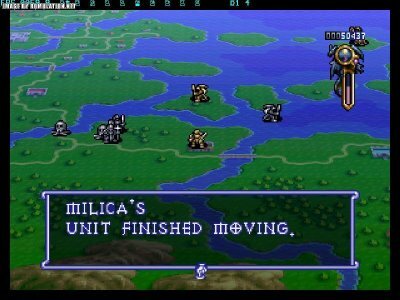
Ogre Battle focused on Strategic Choice
That being said, I feel that too often games try and give the player too MUCH choice. The more choice you give a player the harder it actually is for them to make a meaningful choice because they can no longer accurately judge the value of one choice against another. This is sometimes referred to as the “Paradox of Choice”, and it is something that you always have to keep in mind. You might think that your game is “totally awesome” because it offers me every single kind of variation in modern day assault rifles, but as a player all I am going to feel is completely overwhelmed. In this case having that many weapons is going to have massive overlap in the purpose. As a player not only am I going to struggle to pick a gun, but when I finally do pick one I am going to feel less satisfaction in my choice because I will be constantly wondering if there was a better option.
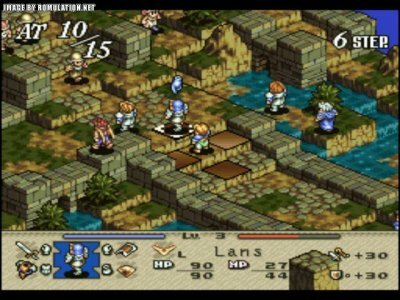
Tactics Ogre focused on Tactical Choice
Closing
As you can see, each of these different layers builds upon the part that comes before it. If a mechanic doesn’t feel good, then mastery is going to be painful. If there is no purpose, then mastering it is unrewarding. If the purpose of two mechanics overlaps or the purpose is unclear, then you can’t make a meaningful choice.
Pingback: 游戏机制设计应考虑玩家满足感的五大来源 | GamerBoom.com 游戏邦